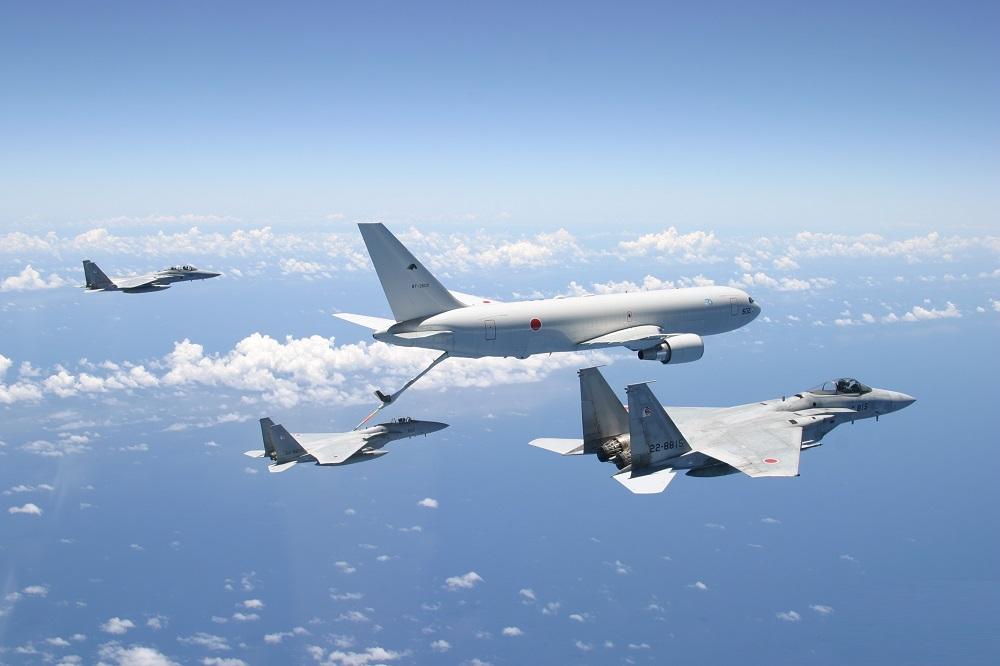The Boeing Co., Tukwila, Washington, has been awarded a $398,244,094 firm-fixed-price modification to delivery order FA8609-18-F-0006 for KC-46A Japan aircraft under the basic ordering agreement contract vehicle. The contract modification is for the procurement of two aircraft for the Japan Air Self-Defense Force (JASDF) fleet. Work will be performed in Everett, Washington, and is expected to be completed June 30, 2025. This is the result of a sole-source acquisition. This modification involves Foreign Military Sales (FMS) to Japan and FMS funds are being obligated at the time of award. Air Force U.S. Life Cycle Management Center, Wright-Patterson Air Force Base, Ohio, is the contracting activity.
The Boeing KC-46 Pegasus is an American military aerial refueling and strategic military transport aircraft developed by Boeing from its 767 jet airliner. In February 2011, the tanker was selected by the U.S. Air Force as the winner in the KC-X tanker competition to replace older Boeing KC-135 Stratotankers. The first aircraft was delivered to the Air Force in January 2019. The KC-46 Pegasus is a variant of the Boeing 767 and is a widebody, low-wing cantilever monoplane with a conventional empennage featuring a single fin and rudder. It has a retractable tricycle landing gear and a hydraulic flight control system. The Pegasus is powered by two Pratt & Whitney PW4062 engines, one mounted under each wing.

It has been described as combining “the 767-200ER’s fuselage, with the 767-300F’s wing, gear, cargo door and floor, with the 767-400ER digital flightdeck and flaps”. The KC-46 uses a similar Maneuvering Characteristics Augmentation System (MCAS) to that implicated in two 737 MAX crashes; in March 2019, the USAF began reviewing KC-46 training due to this feature. Unlike the 737, the KC-46’s MCAS takes input from dual redundant angle of attack sensors and disengages with stick input by the pilot. The boom is furnished with a hydraulic relief valve system, similar to those on the KC-10 and KC-767 tankers, to relieve axial pressure in the event of excessive loads building up on the boom.
On 23 October 2015, Japan selected the KC-46, with a contract for three tankers expected in 2016. The decision allows for common operations and training with the U.S. Air Force, and Japan was reportedly attracted to its capability to refuel MV-22 Osprey tiltrotors, which the JASDF is to receive. The three tankers are to be fielded around 2020 at a cost of more than ¥20.8 billion, about US$173 million per aircraft. The JASDF reportedly sought to acquire a total of six KC-46s.[126] An order for a third and fourth KC-46 was placed on 30 October 2020. On 8 February 2021, the JASDF conducted its first KC-46 flight. Training of Japanese KC-46 pilots began in June 2021 and Japan received its first KC-46 in November 2021.












